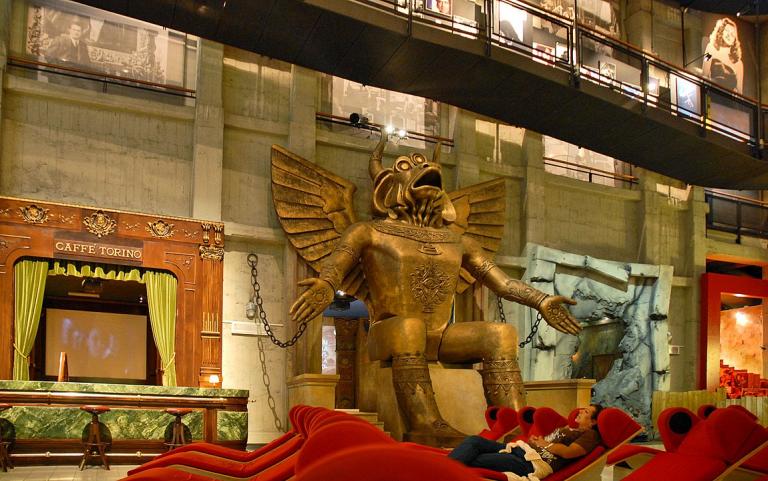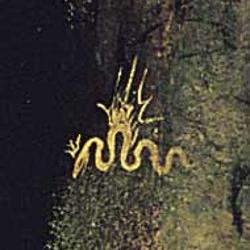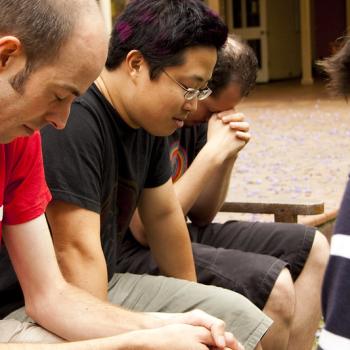If you visit the Colosseum in Rome, where thousands of Christians were martyred, you will pass at the entrance an enormous image of Moloch, the gruesome Canaanite deity that demanded the sacrifice of infants and small children.
The idol, modeled after a depiction in the classic silent film Cabiria, is part of an exhibit on ancient Carthage, where Moloch was worshiped. Many conservative Catholics and Christians in general are unnerved by the presence of the idol on what they consider sacred ground. The Colosseum, the stadium where Rome staged its gladiator fights and other entertainments (including the torture of Christians) is owned and operated by the Vatican, which must have given permission for the exhibit and the installation.
The controversy over the Moloch image has become tied to another controversy over the use of an Amazonian fertility idol to the goddess Pachamama in a series of ceremonies, including one at the Vatican gardens at which the Pope was present. The events, honoring the Amazonian Synod that was considering ordaining female priests, included indigenous worshippers prostrating themselves before the idol and a liturgical prayer to the goddess. Some conservative Catholics later stole the idols and threw them into the Tiber river. They were recovered and the Pope apologized.
Defenders of the statue say that it’s simply a part of a historical, cultural exhibit about Rome’s ancient rival and that no religious significance was intended. Fine. But why wasn’t the figure relegated to the context of the other exhibits inside, rather than “welcoming” (the word used in the press release) visitors at the entrance of the Colosseum itself? True, statues of other pagan gods, such as Jupiter and Mercury, can be found everywhere in Rome. But Moloch is particularly problematic.
So what’s the issue with Moloch? This is no ordinary animistic image. Even the Greek and Roman pagans were horrified by Moloch and how he was worshiped. The classical writers associated Moloch with Cronus, whom the Romans called Saturn, one of the old gods who devoured his own children until he was overthrown by his child Zeus. Cleitarchus writes of Carthage,
There stands in their midst a bronze statue of Kronos, its hands extended over a bronze brazier, the flames of which engulf the child. When the flames fall upon the body, the limbs contract and the open mouth seems almost to be laughing until the contracted body slips quietly into the brazier. Thus it is that the ‘grin’ is known as ‘sardonic laughter,’ since they die laughing.
Diodorus writes,
There was in their city a bronze image of Cronus extending its hands, palms up and sloping toward the ground, so that each of the children when placed thereon rolled down and fell into a sort of gaping pit filled with fire.
Plutarch is especially descriptive:
… but with full knowledge and understanding they themselves offered up their own children, and those who had no children would buy little ones from poor people and cut their throats as if they were so many lambs or young birds; meanwhile the mother stood by without a tear or moan; but should she utter a single moan or let fall a single tear, she had to forfeit the money, and her child was sacrificed nevertheless; and the whole area before the statue was filled with a loud noise of flutes and drums that the cries of wailing should not reach the ears of the people.
Carthage was an outpost of the Canaanite civilization that was in conflict with that of the children of Israel. And the Bible expressly and explicitly addresses Moloch and his worship by child sacrifice:
21 You shall not give any of your children to offer them to Molech, and so profane the name of your God: I am the Lord. (Leviticus 18:21)
20 The Lord spoke to Moses, saying, 2 “Say to the people of Israel, Any one of the people of Israel or of the strangers who sojourn in Israel who gives any of his children to Molech shall surely be put to death. The people of the land shall stone him with stones. 3 I myself will set my face against that man and will cut him off from among his people, because he has given one of his children to Molech, to make my sanctuary unclean and to profane my holy name. 4 And if the people of the land do at all close their eyes to that man when he gives one of his children to Molech, and do not put him to death, 5 then I will set my face against that man and against his clan and will cut them off from among their people, him and all who follow him in whoring after Molech. (Leviticus 20:1-5)
10 And [King Josiah] defiled Topheth, which is in the Valley of the Son of Hinnom, that no one might burn his son or his daughter as an offering to Molech. (2 Kings 23:10)
35 They built the high places of Baal in the Valley of the Son of Hinnom, to offer up their sons and daughters to Molech, though I did not command them, nor did it enter into my mind, that they should do this abomination, to cause Judah to sin. (Jeremiah 332:35)
Those last two verses indicate that, despite the Levitical prohibitions and despite the natural feelings of parents for their children–exhibited even by Carthaginian mothers who had sold their children–many Israelites nevertheless killed their own sons and daughters in offerings to this horrible god.
And, indeed, this temptation remains. Some prolifers have related today’s abortion epidemic–in which parents sacrifice their own children to career goals or lifestyle plans–to Moloch worship.
I have been working with John Kleinig on his translation of J. G. Hamann‘s London Writings, which includes his commentary on Biblical texts. Commenting on a Levitical passage against child sacrifice, Hamann says that Satan has always feared the “seed of the woman”–that is, Christ–that, as prophesied immediately after the Fall, would be his undoing. Says Hamann, “this fear moved him to use so many strategies to divert humans from reproduction and to murder children.” This accounts for Satan’s emphasis on tempting people to sexual immorality and to harm children, as in Moloch worship, and, we could add, infanticide, child abuse, and abortion.
Since, as St. Paul says, “what pagans sacrifice they offer to demons” (1 Cor 10:20), Moloch is clearly demonic. Pope Francis may be liberal, but he believes in demonic possession and is pro-life, so he should certainly be sensitive to these issues.
At any rate, it appears that we are back to having to contend with old-school idolatry, with Moloch becoming a fitting deity for our culture of death.
Photo of the idol of Moloch used in the film Calibria, the model for the Colosseum exhibit, in the National Museum of Cinema in Turin, by Jean-Pierre Dalbéra from Paris, France – Le musée du cinéma #Turin#, CC BY 2.0, https://commons.wikimedia.org/w/index.php?curid=10476540 via Wikimedia Commons


















